Redshift rendering enhances randomisation and stylised materials, Trapcode workflows add parent-child particle options and gradient interpolation, Forger has a new Sketch Sculpt brush.

The Maxon One combined package of 3D and motion graphics software subscriptions now has several new updates.
Redshift Randomisation
In Redshift, a new Jitter Node makes it easier to randomise data, breaking up repetitive patterns and textures by automatically applying colour variation across a large number of objects that have the same material applied. This is useful for creating foliage, rocks, a jar full of sweets or a crate of fruit of varying degrees of ripeness. It is available for most creation software such as Cinema 4D, ZBrush, 3ds Max, Maya, Houdini and Katana.
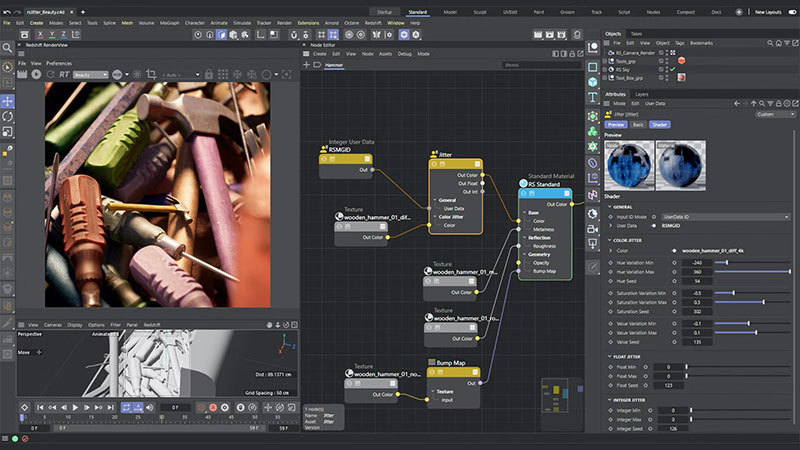
New texture memory optimisations result in overall performance improvements when handling textures in Redshift. A MatCap Shader Node is added for creating stylised materials quickly by mapping an image onto a mesh positioned relative to the render camera, serving as a foundation for non-photo-real materials in Redshift.
Redshift CPU rendering performance now scales more effectively with extra CPU cores, or even multiple CPUs in one system, resulting in faster render times. It also includes support for Maya 2024 on Mac systems.
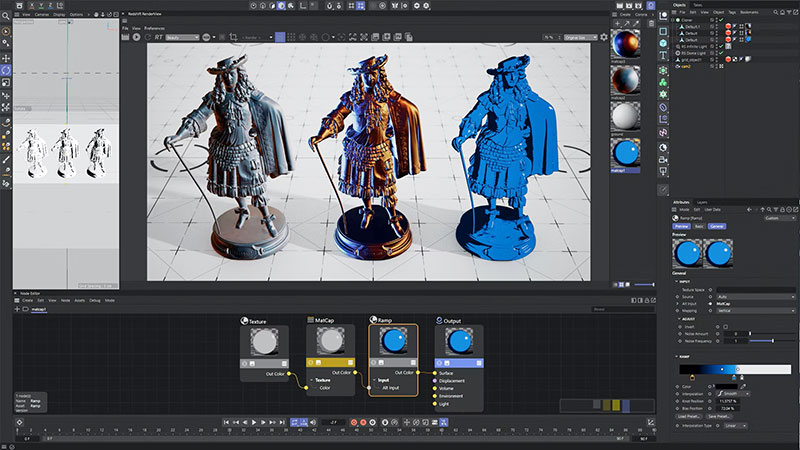
Trapcode Particles and Bounce Ground
Trapcode users have new child inheritance options that allow the type, size and opacity values of child particles to be driven by the attributes of their parent particle. Child systems inherit these characteristics at the time of their birth, opening creative possibilities that allow users to create effects in which each child particle exactly matches the attributes of their parent particle.
Three new gradient interpolation models for motion graphics, further to the existing RGB model, are added to Trapcode to help artists explore different styles and design new transitions.
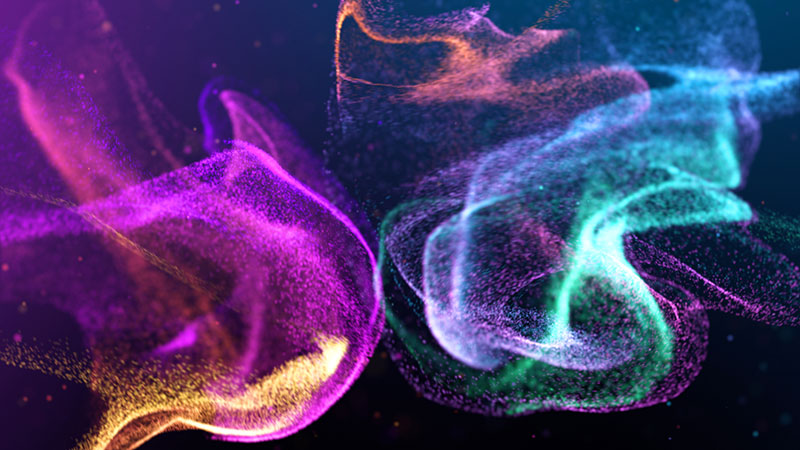
A new Bounce Ground Plane serves as an additional bounce surface and makes it easier for VFX and motion graphics artists to set up an infinite bounce surface with height and rotation controls. This new Bounce plane comes with several pre-designed setups and allows you to create and save your own Bounce presets.
The new Curve Mirror Mode yields perfectly symmetrical curves along the horizontal axis, and 3D Stroke and Sound Keys now feature the same colour and curve UI updates previously implemented in Particular. For consistency across Maxon’s systems and software packages, Particular Designer now accesses the After Effects colour picker instead of the operating system’s default colour picker.
Forger Illumination and Circles
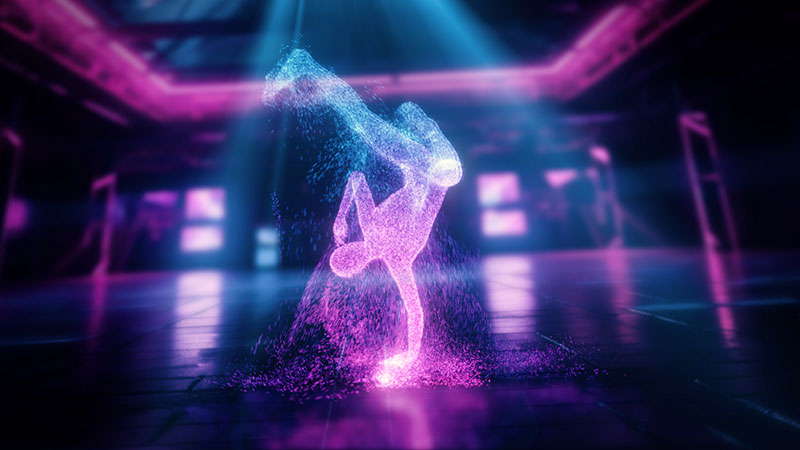
Forger users can create interesting new shapes with an Apple pencil using the Sketch Sculpt brush, and navigate the camera around the area of interest more naturally using the new Action Point camera. To accurately model details or share work, Area and IES (Illuminating Engineering Society) Lights now extend the existing types of lights.
Various new tools assist users with round and circular modelling. The Sweep tool, for instance, creates pipes or horns, and the Lathe tool turns a complex profile onto round surfaces. Set Flow rounds out harsh bevels by adjusting the curvature on a selection of edges based on the surrounding geometry.
The Fit Circle tool allows users to model round details by nominating a group of polygons and using interactive handles to adjust the size of the circle to fit to. Using the flatten option, the surface can be averaged at the same time.
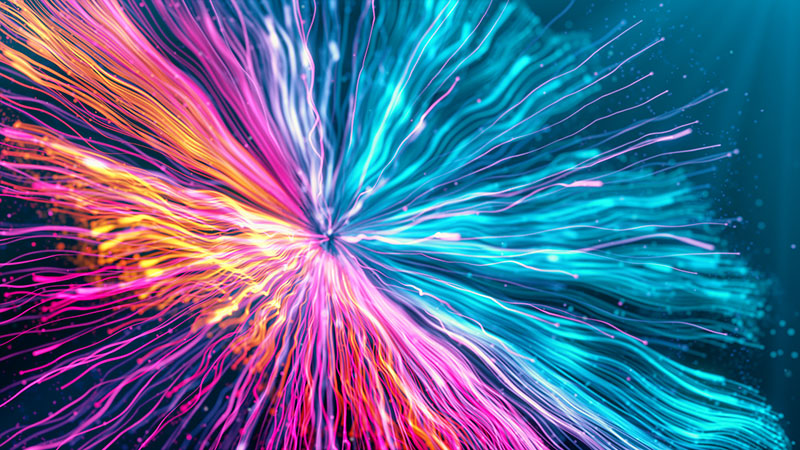
Artists can also organise their assets, group their elements and manipulate groups together inside Forger, using complete new hierarchy support.
Capsules – Plants and Glass
The collection of Capsules also continues grow for subscribers of Maxon One and Cinema 4D. The new selection of realistic Redshift glass materials for architectural visualization, product shots and motion graphics include condensation materials useful for applying rain to windows or water droplets to cold drinks. Beyond the basic ‘perfect’ glass is a collection of smoked, distorted, dirty and smudged variations to use when visualising urban landscapes or creating VFX shots. Half of these materials are available with active Cinema 4D subscriptions and the other half are exclusive to Maxon One subscribers.
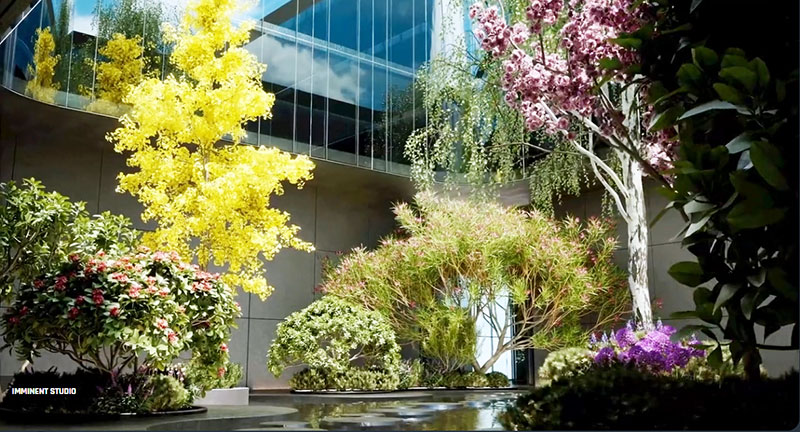
A second pack of plants by Laubwerk, a specialist in landscape visualisation and 3D software development, is also available featuring 51 plant models suited to architectural visualisation, VFX shots and illustration. These assets add a natural feeling to scenes by scattering lifelike Rosemary plants, Pine, Birch and Willow trees. Each variety is supplied in a range of ages, seasons and shape variants to result in a distinctive render. All of these plants are available to susbcribers with a Cinema 4D or Maxon One subscription. www.maxon.net


